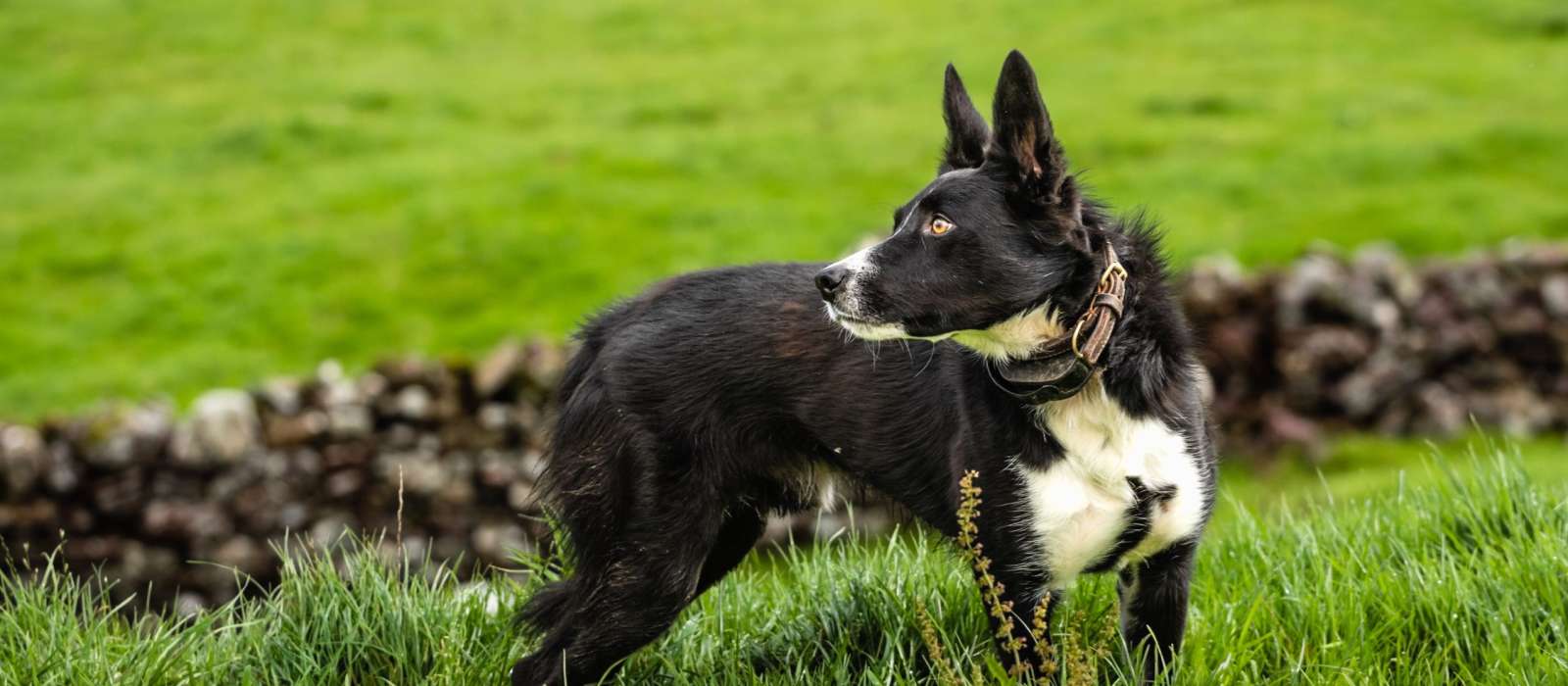-
Activity Level:
high
-
Shedding Level:
moderate
-
Grooming Level:
moderate
-
Trainability:
high
-
Good for Novice Owners:
low
-
Adaptability:
moderate
-
Kid/Pet Friendly:
sometimes
-
Prey Drive:
high
-
Watchdog:
very alert
- Average Size: Medium
- Average Lifespan: 13-15 years
- Registered?: other
McNab Shepherd Dog Breed Information
Overview
Temperament
Adaptability
Health
Owner Experience
Grooming
Activity Level
Size
Life Span
Did You Know?
The McNab Shepherd, also called the McNab, McNab Stock Dog, McNab Collie, McNab Sheepdog, McNab Herding Dog, and McNab Cattle Dog, is a herding dog that originated in Northern California in the late 1800s. Their ancestry includes Scotch Collies. Alexander McNab crossed these dogs with herding dogs from Basque Shepherds who immigrated to the region to create the original McNab Shepherd lines.
When Alexander McNab passed away in 1901, his son, John McNab, inherited the family ranch and continued developing what would officially become the McNab Shepherd. By the mid-1940s, McNabs were the most popular sheep dogs in the “Redwood Empire”, a specific area along the north coast of California.
McNab Cattle Dogs were initially bred in the Mendocino region of California to herd sheep. However, their “loose-eyed” herding style means they tend to work more independently than other herding breeds and can both head and heel stock. This means they are adept at getting behind livestock and driving them forward as well as being able to skillfully turn them from the front as well.
Because of their skills and adaptability, stock handlers began using them for herding cattle as well as sheep. Now, one of the facts about McNab Shepherds is that they have a proven track record of being able to herd sheep, cattle, llamas, horses, goats, chickens, and even geese. Until recently, the McNab was relatively unknown outside of California. However, their keen herding and sporting abilities have contributed to them gaining popularity and notoriety.
Although wineries have replaced the McNab family ranch, the original 10,000 acres plus are now referred to as “McNab Valley” and enthusiasts for the McNab Shepherd dog breed are still committed to preserving the lines and traditions. Although the McNab Shepherd is not currently recognized by any major kennel club, they can be registered with the McNab Shepherd Registry.
McNabs are affectionate dogs that bond closely with their families. They are very much family-oriented dogs that are sensitive and in tune with their favorite humans. They tend to get along well with children, dogs, and other pets in the family. They do tend to be vigilant watchdogs with guardian instincts over their family and territory.
This makes them naturally wary and suspicious of strangers. A well-socialized and trained McNab Shepherd will bark to alert you and will tend to warm up to strangers once introduced, but they may still be initially aloof until someone becomes more familiar. You may want to train your dog to stop barking early on to make sure alert-barking does not become nuisance-barking.
McNabs are moderately adaptable dogs. Due to their high energy and sharp sense of territory, they tend to be a better fit for homes with fenced yards or farms with defined boundaries where they can run. They are not generally recommended for apartment living unless plenty of time is dedicated each day to giving them enough exercise and mental stimulation.
They do well in most climates. These dogs were bred to withstand rugged terrain and tough conditions common to Northern California. Due to their short coat, they may need some winter dog gear to keep them warm while out on walks when temperatures drop or during adventures in the snow.
The McNab Shepherd is a hardy breed with relatively few health problems associated with it. McNabs can carry the MDR1 mutant gene, which makes them sensitive to Ivermectin. This is a common ingredient in many heartworm prevention medications, so it is essential to know if a dog is a carrier of this gene mutation. DNA testing for this gene mutation is recommended.
Good breeding practices make a big difference and the health and genetic history of parents will make a difference in the health of puppies. Reputable breeders will screen their dogs to avoid passing preventable issues to puppies, so make sure you are having these conversations with the breeder. You can also ask about health tests and clearances that have been done.
McNabs are highly intelligent and pick up on things quickly, but they tend to get bored easily and also can be demanding and assertive. Their independent work ethic that works so well in herding livestock can become a stubborn streak with inexperienced owners or inconsistent or negative training.
Because of this, McNab Shepherds are not recommended for more experienced dog owners who can give them the consistency, firmness, and positive dog training methods they need to thrive. Because there are several benefits of puppy training classes, including socialization and bonding, they can be a good idea even if you don’t necessarily need them for help with training.
McNab Shepherds have moderately short and smooth double coats. They tend to be straight and can sometimes be slightly wavy. The undercoat is soft and short while the top coat has a finer texture. Some McNabs may have slight feathering on their ears and hind legs. Common coat colors are black, red, or blonde with white markings and tricolor.
They shed a little year-round and heavier as the seasons change. Brushing weekly or a few times a week, daily brushing during seasonal shedding, and the occasional bath as needed are usually enough to keep a McNab Cattle Dog coat looking great.
In addition to coat care, you will also need to take care of your McNab Shepehrd’s nails, ears, and teeth. Cutting nails once or twice monthly is usually enough to keep them from growing too long. Weekly ear checks, along with careful cleanings as needed, can help prevent ear infections. Good dental care for dogs starts with daily tooth brushing or daily use of an enzyme toothpaste and cleanings at the vet when needed.
McNab Shepherds are high-energy dogs. They require daily walks plus time to run and other activities. They are also working dogs that need a job to do and goals to work toward to be happy and healthy. If not given enough exercise or mental stimulation, these dogs can start to have behavioral problems as they become increasingly more bored and frustrated. You need to make sure they have an outlet for their activity level, instincts, and intelligence.
They were bred for hardiness and endurance to be able to drive herds over miles and miles in a day. This makes them one of the dog breeds that make good running partners and a good fit for a variety of dog sports and activities once puppies finish growing and their bones are done developing. McNabs have been known to excel at flyball, agility, lure chasing, nose work, frisbee/disc work, dock diving, and more.
Fully grown McNab Shepherds usually stand 18-25 inches tall and weigh 40-70 pounds.
McNab Shepherds generally live for 13-15 years on average.
A McNab Shepherd named Topsey won the Calistoga, California Napa County Fair Sheep Dog Trials in 1950. In addition to being incredible herding dogs for all types of farm animals, these McNab Shepherds can also be found working as police dogs, military dogs, and search and rescue dogs.
They have excelled as evidence search dogs, archaeology dogs, cadaver dogs, and search dogs specifically for locating missing persons. They also tend to make good service dogs and therapy dogs and are also capable hunting dogs.






